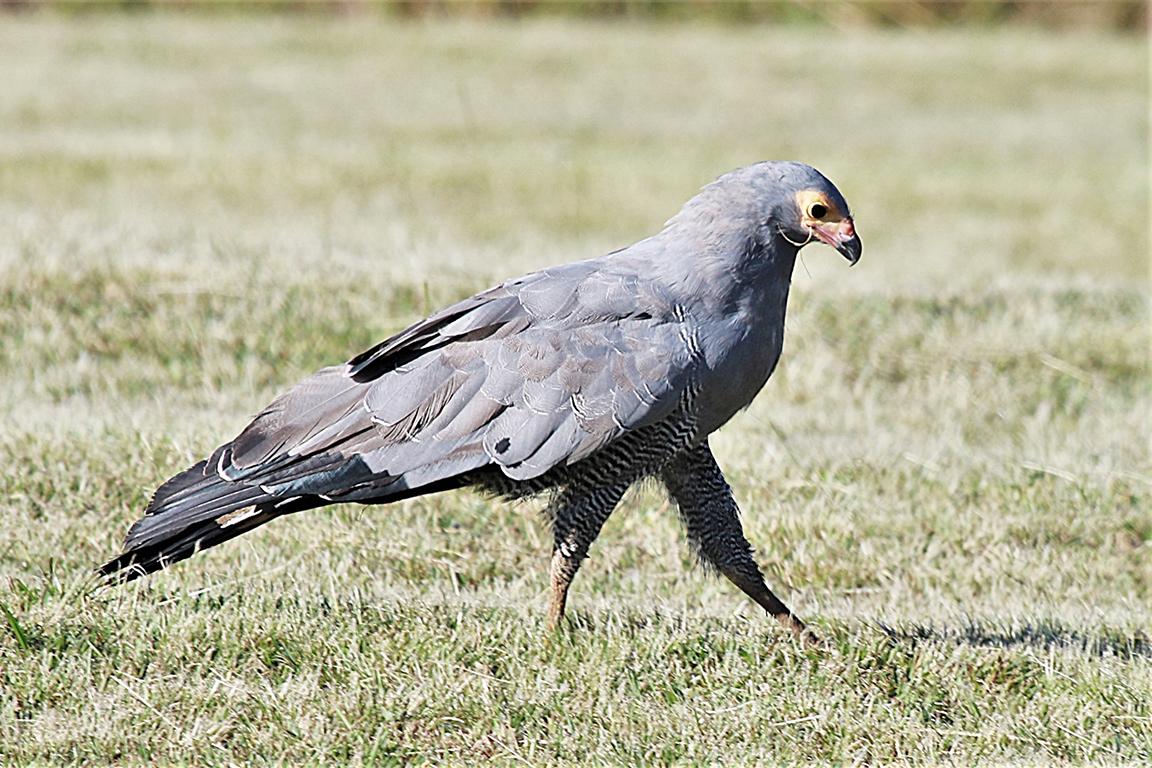African Harrier-hawk (Gymnogene)

Drakensberg, South Africa
The African harrier-hawk, or gymnogene, is a raptor found in sub-Saharan Africa although more common in the tropical West.
Habitat
The harrier-hawk's natural habitat was originally rainforest, forest fringes and riverine woodland. However it has adapted well to human occupation and is also found on agricultural land, around rural villages and even in urban gardens.
Feeding
African harrier-hawks are omnivores and eats palm fruit. They also hunts small vertebrates. Their ability to climb enables them to prey on the eggs and chicks of cavity nesters such as barbets and wood hoopoes. They also feed on bats, rodents, lizards. amphibians, fish and insects.
Breeding
African harrier-hawks usually nest in large trees often growing on rocky outcrops. Nests may be used for several breeding seasons and are large, untidy stick structures lined with leaves and frequently in the main fork of the tree below the canopy. Both parents incubate from one to three white eggs which often have reddish brown blotches. Both parents also feed the nestlings with the male usually delivering the food to the nest which is then presented to the chicks by the female.
Wildfile Specials
- The name gymnogene is derived from the Latin "gymnogenys" meaning bare-chinned or bare-cheeked.
- When the harrier-hawk calls near the nest, the bare cheek patch turns pink, and when displaying, it becomes various shades of orange, yellow and red.
- Harrier-hawks are monogamous and solitary nesters and are very territorial. Harrier-hawk pairs occupy territories of around 25 square kilometers.
- Amongst other hunting strategies, the harrier-hawk soars close to the canopy where it is mobbed by smaller birds. It locates and plunders nesting sites revealed where the mobbing is most aggressive.
- Like other raptors, harrier-hawks will soar at altitude in order to locate prey, but they will also actively search for prey on the ground or clamber in the branches of trees or amongst rocks.
- Hawk-harriers have evolved small heads, small feet, flexible wings and long double-jointed legs enabling them to access holes, crevices and weaver bird colonies that other raptors cannot reach.
- Its tarsal joint bends forwards, backwards and sideways, making it unique in the bird world.